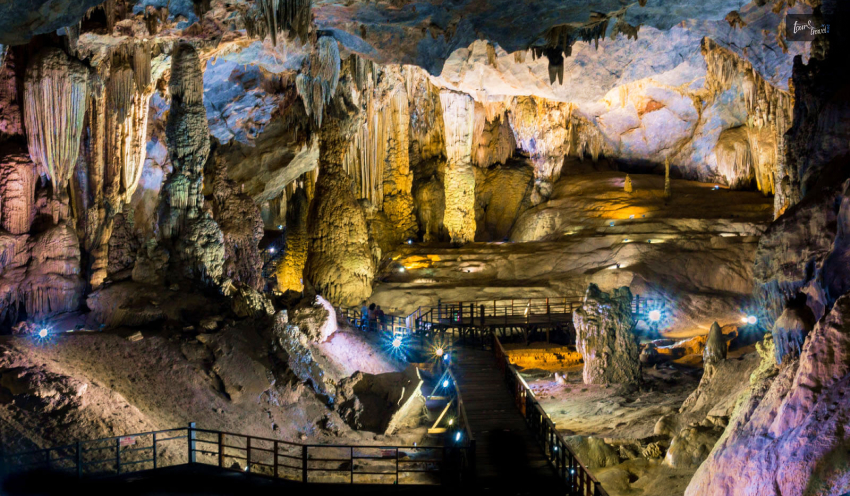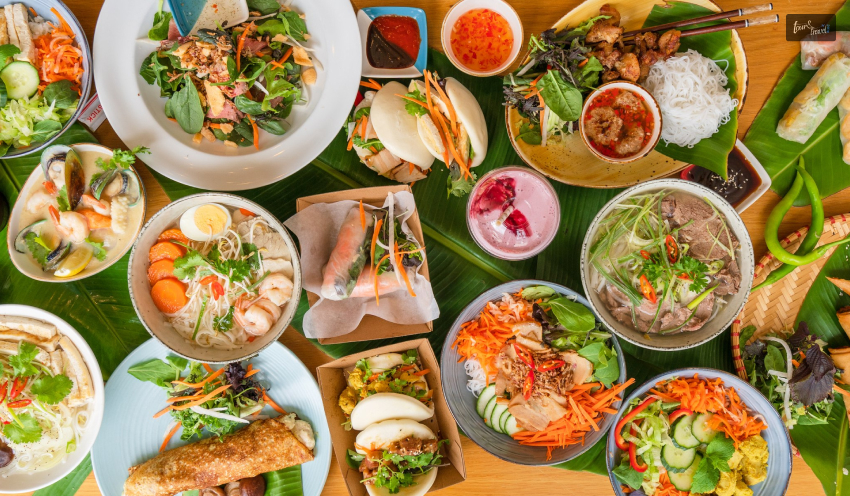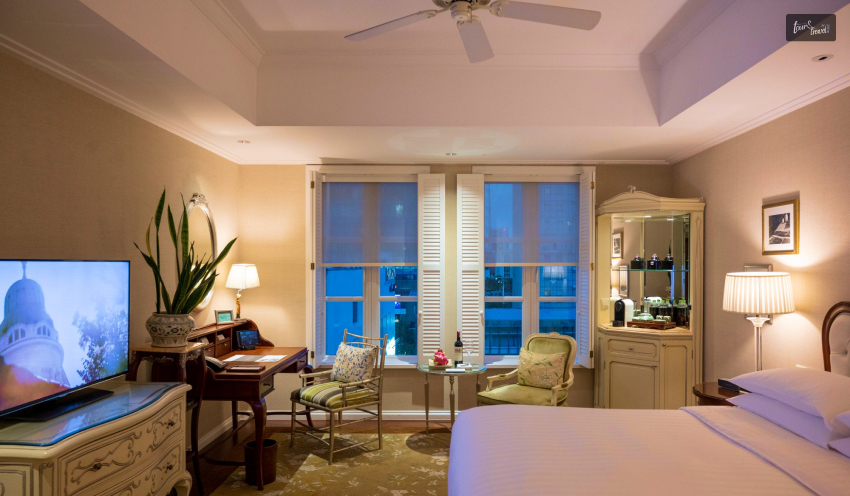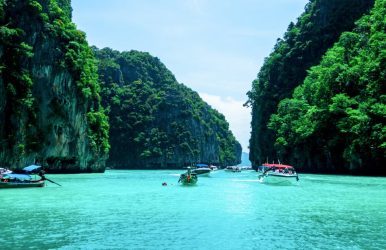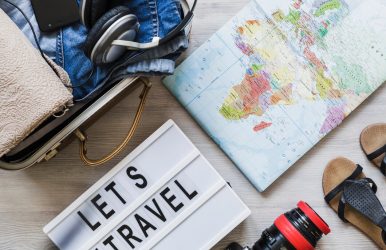Warm Winter Wanders: January Destinations to Soak Up the Sun
BY Abdul Aziz Dec 30, 2023
Come January, and you can't help but stare out the window. As the temperature drops, you daydream about visiting somewhere warm. We are here to give you ideas about warm places to visit in January. Fortunately, January is a fantastic month to travel. Rates start to decline as the holiday rush fades, making it the perfect time to take a flight to sunnier and greener pastures. Naturally, it depends on your goals. Nothing compares to visiting the Serengeti in January for a warm-weather bucket list trip. When it comes to finding a good airfare deal, keep an eye on flights to Hawaii. This is when prices drop to attract travelers and boost the state's economy following the Maui fire. Visit Curaçao for the best of everything, including warm weather, direct flights, beaches, culture, and cuisine. Stay at the recently opened adults-only boutique Kura Botanica. It is housed in a UNESCO World Heritage building. This is a surefire way to beat the winter blues. It's more of a hidden gem in the Caribbean, at least to Americans. Where Is It Hottest In The US? Hawaii and Puerto Rico will likely be the warmest places in the United States in January overall. The Sun Belt region stretches from Southern California to North Carolina. It includes cities like Miami, Houston, Fort Lauderdale, Los Angeles, Las Vegas, San Antonio, Phoenix and more. It is the central attraction on the mainland. If travelers seek to avoid the cold and snow, many warm-weather U.S. locations wind up with extended high seasons that last into January. Following the cost of travel to particular locations will give you a good idea of how eager those locations are to welcome more tourists. Warm Places To Visit In January January is the month of new beginnings. It is when the snow gets all the more spiteful too. If you want to escape the cold and soak up some warmth we are here to help. Here are some of the best warm places to visit in January. Palm Springs Warm places to visit in January? Some sunshine? Low seventies for highs? Palm Springs in January is absolutely idyllic. The stylish haven in the Sonoran Desert is well-known for its iconic architecture, mid-century aesthetic, and seductive stories from the heyday of Tinseltown. That begs the issue of where you intend to stay. There are many chic hotels available, regardless of your preference for modern design or classic glamor. We also adore the notion of renting an amazing home built in the well-known neighborhood where Elvis and Priscilla spent their honeymoon. Of course, no matter where you live, a pool and jacuzzi are necessities. Complete your schedule with a historical walking tour to discover the locations of the Rat Pack's parties, taking the obligatory pictures under lush palm trees, pampering yourself with spa services, going antique shopping, and spending a day at Joshua Tree National Park connecting with the natural world. Chiang Mai The hot weather in January makes South East Asia itineraries popular, according to Lee Thompson, co-founder of the international travel agency Flash Pack. In particular, Chiang Mai, also known as the “Rose of the North” is a constant reminder that Thailand is more than just the islands of Koh Samui and Phuket. The historic Lanna Kingdom's capital enchants visitors with its laid-back vibe and vibrant culture. The city is home to hundreds of lavish Buddhist temples, such as the glittering Wat Phra Singh. It is located near lush rainforests, majestic mountains, and elephant sanctuaries. Chiang Mai's climate is marginally cooler than Bangkok's. You can spend more time sightseeing without getting sweaty through your gauzy printed pants. Sincerely, it will still feel quite warm. Yucatan Peninsula Cancún, Playa del Carmen, and Tulum have made the Yucatan Peninsula a tourism hotspot. You probably haven't heard of Campeche, though. That's alright, because until recently, we did not know much about it either. This less-traveled port city exudes history and charm. January is the ideal month to visit because of the mild weather. You will want to spend time exploring the hilltop fortresses, colonial buildings with sherbet hues, cobblestone streets, and UNESCO-listed walled historic center. The waterfront promenade is a great place to stroll at sunset or jog in the morning. Take a tour of Edzna's artisan, culinary, and archaeological offerings, or peruse its historical artifacts. If you want to find warm places to visit in January, you can bet on Yucatan Peninsula as your Vitamin D supplement. Phuket Everyone adores Phuket. From celebrities and honeymooners to spring breakers and backpackers. With its white sands, swaying palm trees, and turquoise tides, it will absolutely astound you. But the breathtaking scenery isn't the main attraction. The largest island in Thailand is home to hundreds of hotels, a renowned nightlife, mouthwatering regional cuisine. It also houses Buddhist temples, and famous diving spots. You can still find genuine deals here. January is the best month to visit and it's now a fully fledged tourist destination. For example, a deluxe room at the Renaissance Phuket Resort & Spa, a lovely oceanfront property with chic decor and excellent service, will set you back $150 per night as of this writing. Couples will adore Trisara, which romantically dazzles with a Michelin-starred restaurant, a luxurious spa, and a private beach. Although it is more expensive, it is unquestionably worthwhile for an exceptional anniversary trip or an extravagant international vacation. Hostels in the vibrant town of Patong, on the other hand, start at $8. Grand Cayman Grand Cayman is the ideal Caribbean retreat. It is noted for its tranquil waters, vibrant coral reefs, and mostly, its breathtaking Seven Mile Beach. Among the most popular activities are fishing, stand-up paddle boarding in a bioluminescent bay, ray catching, and snorkeling. Cayman is also a top business destination for opening offshore companies and even trusts. Visit George Town to witness the enormous cruise ships docking at the port. The Cayman Islands National Museum and the remains of a fort from the colonial era are also located in the nation's capital. The Cayman Cookout is coming back (January 10–14, 2024), and foodies won't want to miss it. This delectable event, which takes place at The Ritz-Carlton, Grand Cayman, brings together world-class chefs, sommeliers, and spirit enthusiasts. Among the previous headliners were Emeril Lagasse, Éric Ripert, Deedee Niyomkul, and José Andrés. The Bahamas Here is another spot that you can consider as your fix for warm places to visit in January. The Bahamas' soft, silky sand, vibrant coral reefs, and delightful island breeze are unmatched. Particularly in the nation's capital, Nassau. It is also one of the busiest cruise ship destinations and the location of the famous The Atlantis Resort. You know, the one that was a frequent hangout for Michael Jackson. Now it also has a suite bearing the pop icon's name. A seven-day trip for two can run up to $3,000. If you choose to stay somewhere else, day passes starting at $135 gives you access to everything the resort has to offer. For example, swimming with dolphins, a 30-minute lazy river, and water slides, to name a few. After that, you can head into town to shop and eat with both locals and visitors. Wrapping Up We hope that you are now eager to start your January vacation. Remember to keep this article handy before you venture. At Tour & Travel our mission is to provide you with up-to-date, comprehensive information at your fingertips. Wherever you travel in January, we hope you have an amazing time. If you have thoughts to share or questions to ask about warm places to visit in January, please leave a comment below. We would love to hear from you! Read Also: Florida Dreams: RV Camping Along the Sunshine State’s Shore Top 7 Places To Visit For An Asian Solo Traveler Wonders of the Waves: RV Camping Along Oregon’s Coastal Beauty

